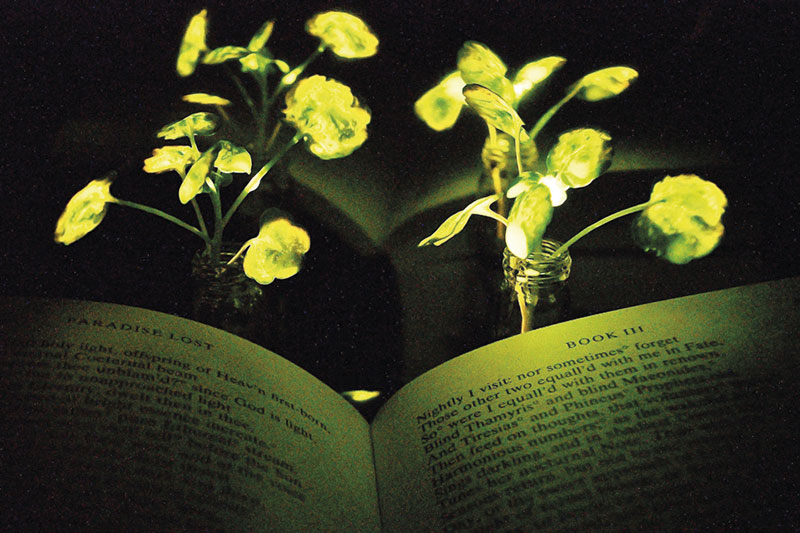Chemical Engineers at the Massachusetts Institute of Technology (MIT), USA, have created a watercress plant capable of emitting light—strong enough to illuminate pages of a book—for up to four hours. Using luciferase and luciferin, the enzymes that make fireflies glow, researchers at MIT and the University of California were able to make watercress, arugula, kale, and spinach emit light. They used silica nanoparticles to carry the luciferase into the leaves and a nanometric biodegradable polymer to transport the luciferin. Incorporation of the enzymes into the leaves occurred in two stages. First, the plants were immersed in a solution containing the suspended nanoparticles. The solution and the plants were then subjected to high pressure, enabling the nanoparticles to enter the leaves through tiny pores called stomata. The luciferase remains in the outermost layers of the leaves while the luciferin is gradually released by the polymer. The chemical reaction between them generates light. The group, led by Michael Strano, from MIT, intends to use the plants as alternative light sources.
RepublishChemistry
Enzyme transforms plants into a source of light

Light emitted by watercress seedlings that contain the luciferase and luciferin enzymes
MIT

